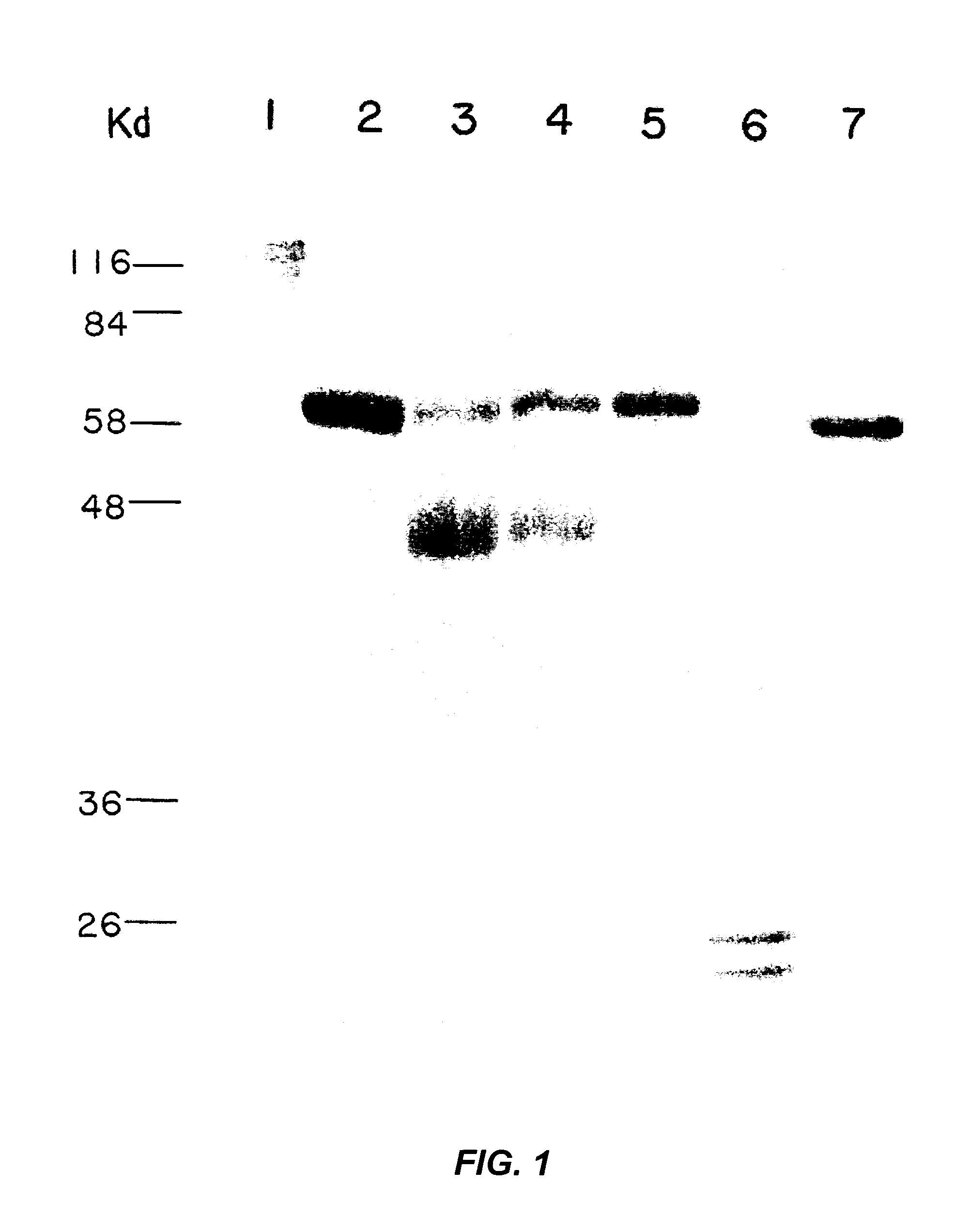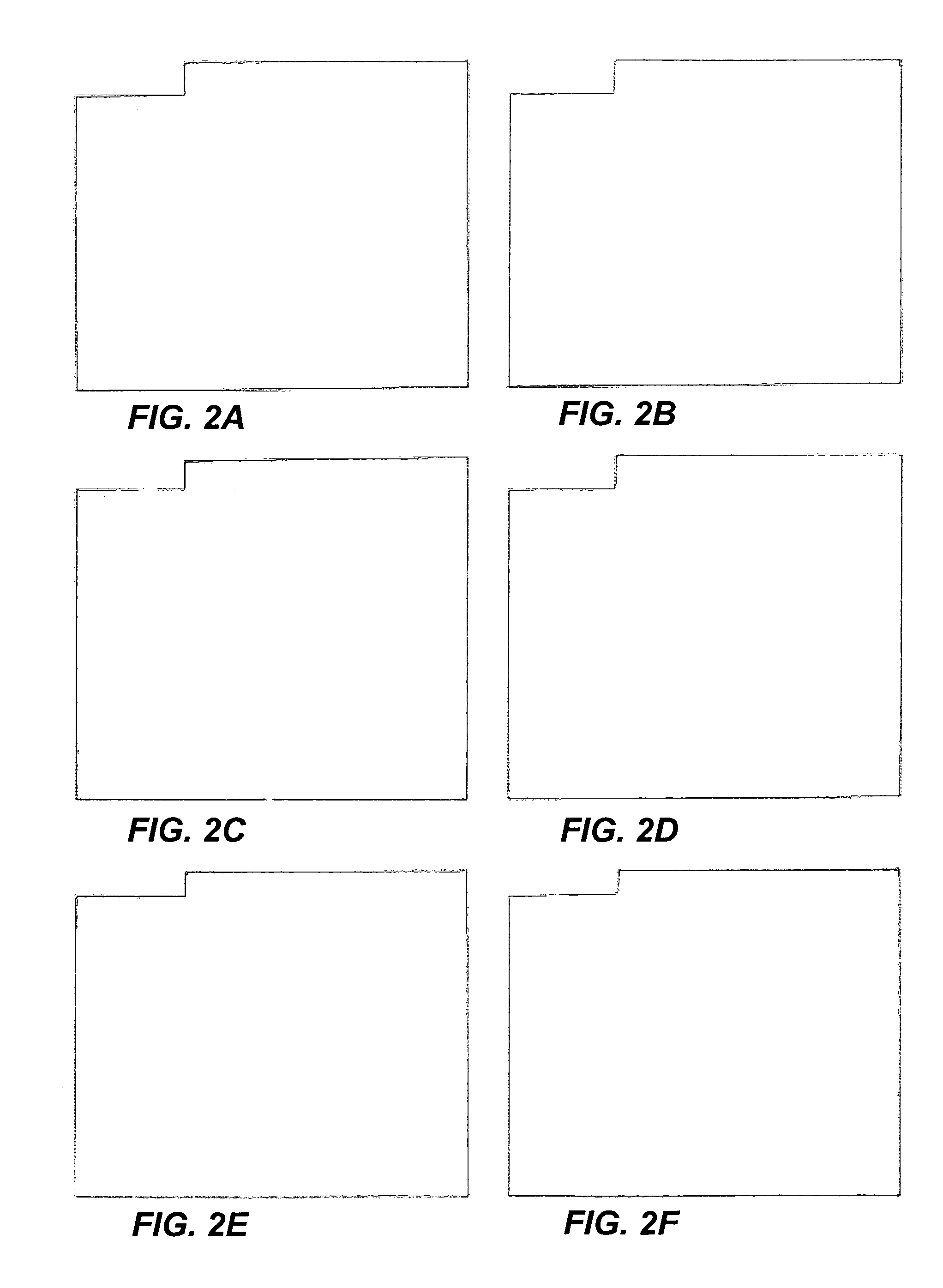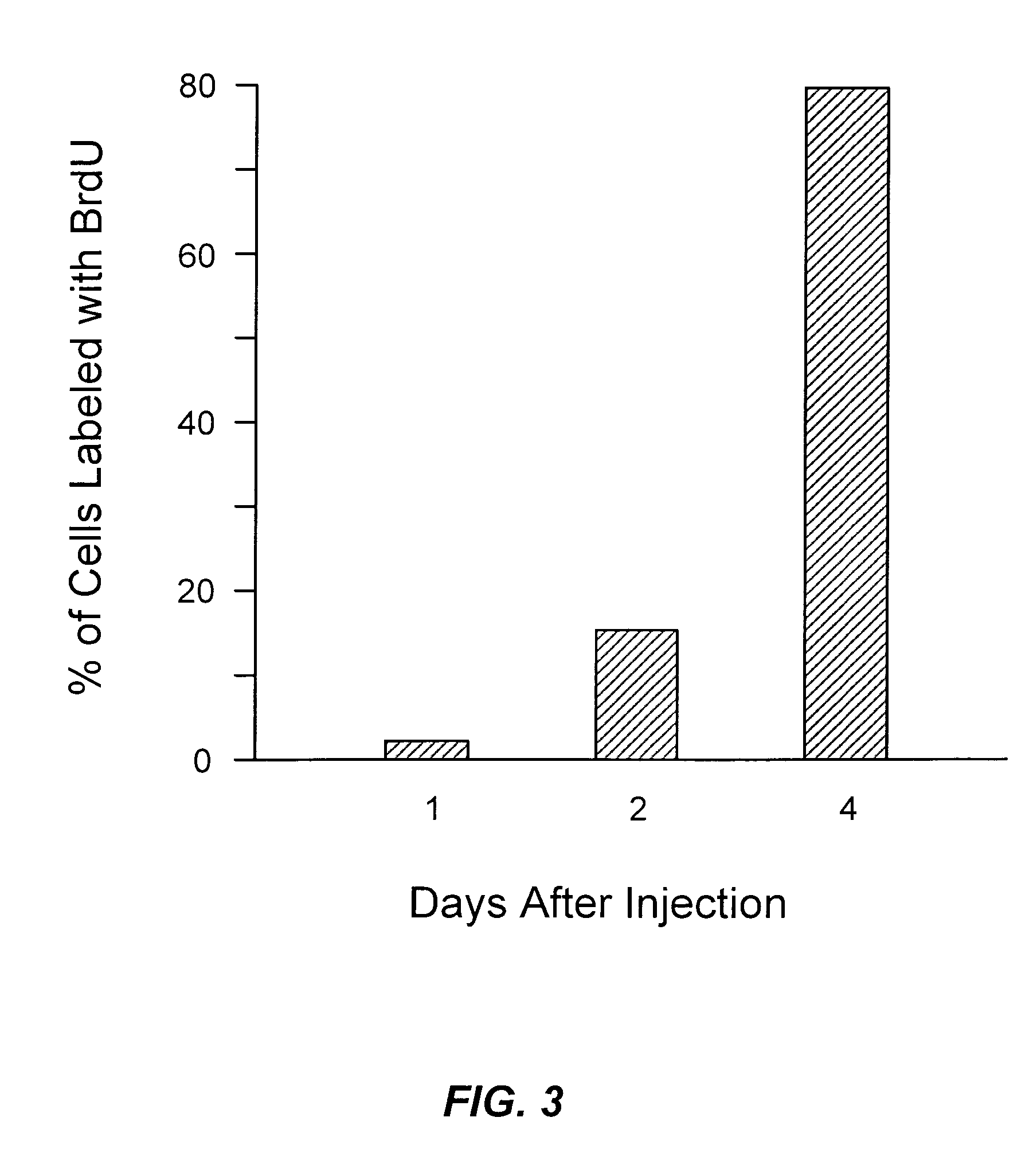Method of using an adenoviral vector encoding a retinoblastoma protein to treat hyperproliferating cells
a technology of retinoblastoma and adenoviral vector, which is applied in the direction of animal repellents, peptide/protein ingredients, dsdna viruses, etc., can solve the problems of cycle progression failure, damage to normal tissues, removal of pathological tissues, and inappropriate local proliferation of cells, so as to achieve little or no toxic effect on healthy cells
- Summary
- Abstract
- Description
- Claims
- Application Information
AI Technical Summary
Benefits of technology
Problems solved by technology
Method used
Image
Examples
example i
Introduction of RB Proteins into Human Osteosarcoma Saos-2 Cells by Microinjection
[0065]With reference now to FIG. 1, there is shown the concentration and purity of protein preparations used in the microinjection techniques discussed below. The protein preparations used for microinjection were analyzed by SDS-PAGE. Lane 1: p110RB from insect cells infected with recombinant RB baculovirus; lane 2: biotinylated rabbit anti-goat antibody; lane 3: anti-RB 0.495 antibody; lane 4: anti-RB R2 antibody; lane 5: anti-RB 0.47 antibody; lane 6: histone H1; lane 7: p56RB from E. coli. One microliter of each sample was loaded on a 15% acrylamide gel. The gel was stained with Coomassie brilliant blue. The positions of molecular weight standards, in kiloDaltons, are indicated.
[0066]Two forms of RB protein were prepared for the microinjection experiments. Wild type p110RB, both hypophosphorylated and unphosphorylated forms, was purified to near homogeneity from baculovirus infected insect cells. At...
example ii
RB Proteins Injected in Early G1 Block Incorporation of BrdU
[0072]Since only a small effect on BrdU incorporation was observed upon injection of RB protein, the cells might only be sensitive to RB protein at a particular point in the cell cycle. The effect of RB protein could be more readily observed by injecting synchronized cells at this point. Cells were synchronized by treatment with nocodazole, which arrests cells in mitosis, and were then released and incubated for an additional 6 hours at which time non-adherent cells were removed and the remaining cells injected. Following a 24 hour incubation in the presence of BrdU, cells were fixed and stained for BrdU and RαG. At least 80–90% of uninjected cells could be stained for BrdU. Cells injected with p56RB, however, were almost completely inhibited from progressing through G1 and into S phase over the labeling period. In this regard, please see Table 2 and FIGS. 2C and 2D. Similar inhibition was observed upon injection with p110R...
example iii
BrdU Incorporation is not Inhibited by 56RB if Injected in S phase
[0077]The lack of BrdU incorporation observed after injection of RB protein in early G1 phase could be explained by inhibition of DNA synthesis. To test this, Saos-2 cells were arrested in early S phase by treatment with aphidicolin and then injected with p56RB. As shown graphically in FIG. 5, BrdU incorporation is not inhibited by p56RB if it is injected in the S phase. Saos-2 cells were arrested at G1 / S by treatment with hydroxyurea or aphidicolin and were then injected.
[0078]After injection, cells were released from arrest and incubated with BrdU for 6–8 hours (hydroxyurea) or 4–6 hours (aphidicolin) at which time the cells were fixed and stained. Cells were also arrested in mitosis by treatment with nocodazole. After release, cells were collected and injected about 6 hours later. Following injection, cells were incubated with BrdU for 24 hours and then fixed and stained.
[0079]The protein preparations used for inje...
PUM
| Property | Measurement | Unit |
|---|---|---|
| concentration | aaaaa | aaaaa |
| pressure | aaaaa | aaaaa |
| concentration | aaaaa | aaaaa |
Abstract
Description
Claims
Application Information
 Login to View More
Login to View More - R&D
- Intellectual Property
- Life Sciences
- Materials
- Tech Scout
- Unparalleled Data Quality
- Higher Quality Content
- 60% Fewer Hallucinations
Browse by: Latest US Patents, China's latest patents, Technical Efficacy Thesaurus, Application Domain, Technology Topic, Popular Technical Reports.
© 2025 PatSnap. All rights reserved.Legal|Privacy policy|Modern Slavery Act Transparency Statement|Sitemap|About US| Contact US: help@patsnap.com



